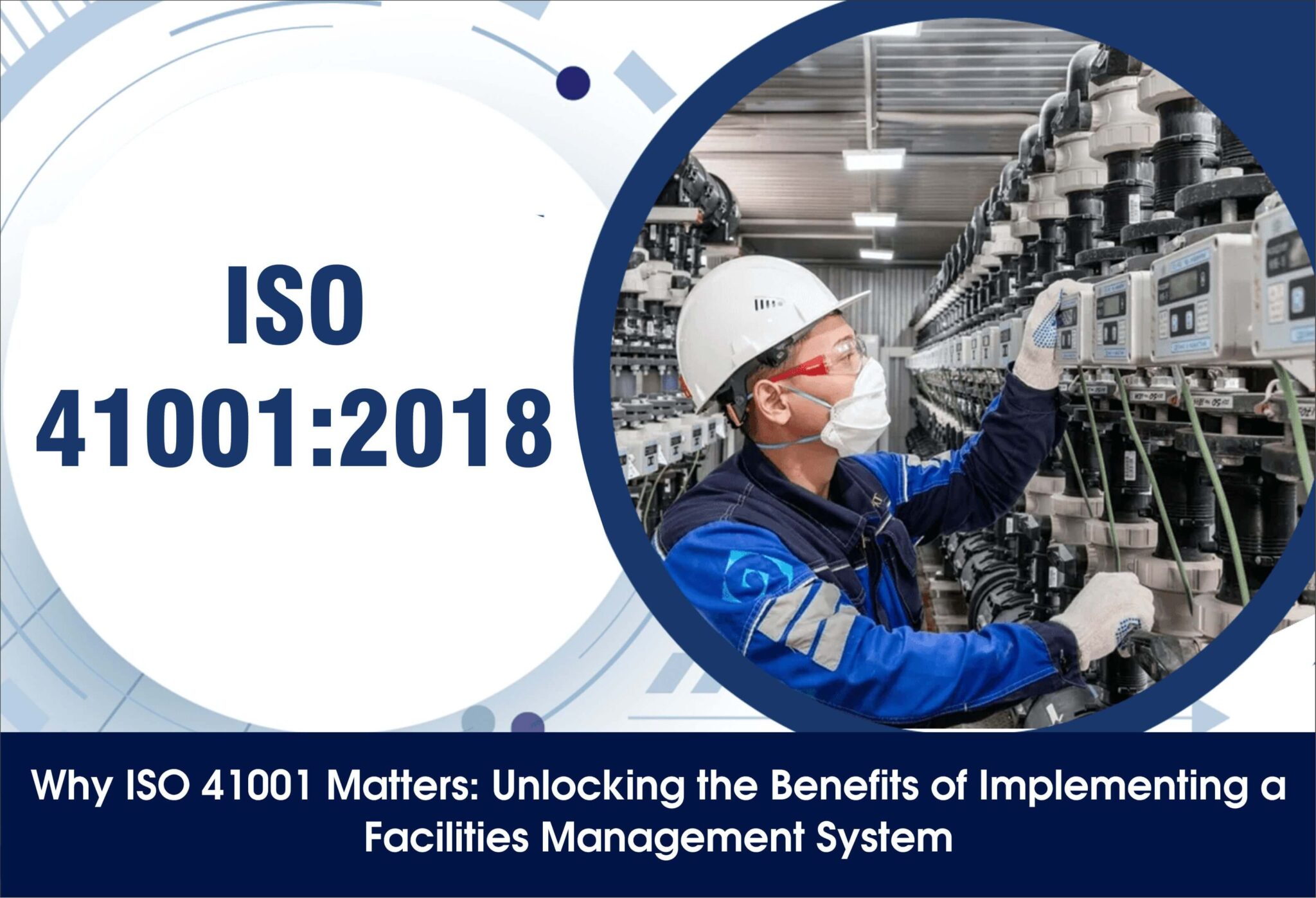Introduction: Understanding ISO 41001 and its Importance in Facilities Management ⮯
In today’s fast-paced and ever-evolving business landscape, effective facilities management is crucial for organizations to thrive. One essential tool that aids in achieving excellence in facilities management is the ISO 41001 standard. ISO 41001 provides a comprehensive framework for establishing, implementing, maintaining, and improving a facilities management system.
ISO 41001 sets forth guidelines and best practices that help organizations enhance their operational efficiency, optimize resource allocation, and ensure the well-being of employees and stakeholders. By implementing ISO 41001, businesses can streamline their facility management processes, improve productivity, and reduce costs.
The benefits of adopting ISO 41001 are far-reaching. It enables organizations to enhance their decision-making processes by providing a systematic approach to managing facilities. It also helps in identifying potential risks and opportunities for improvement within the organization’s facilities management practices.
Moreover, ISO standards play a vital role in ensuring consistency and quality across industries. By adhering to internationally recognized standards such as ISO 41001, organizations demonstrate their commitment to excellence and gain a competitive edge in the market.
We will focus on the importance of ISO 41001 in facilities management. We will explore its key components, the benefits of implementation, and how it contributes to overall organizational success. So, let us embark on this journey towards understanding the significance of ISO 41001 in driving effective facility management practices.
Streamlining Operations and Improving Efficiency with ISO 41001 ⮯
Organizations are constantly seeking ways to streamline their operations and improve efficiency. One effective approach to achieving this is by implementing ISO 41001, the international standard for facilities management.
ISO 41001 provides a framework that enables organizations to optimize their resources and enhance operational excellence in the field of facilities management. By streamlining processes and aligning them with industry best practices, companies can effectively manage their facilities, reduce costs, and improve overall efficiency.
This standard focuses on key areas such as strategic planning, resource allocation, performance measurement, and continuous improvement. By adopting ISO 41001, organizations can establish a systematic approach to managing their facilities, ensuring that they are well-maintained and meet the needs of their occupants.
One of the major benefits of ISO 41001 is its ability to optimize resources. By implementing this standard, companies can identify areas where resources are being underutilized or misallocated. This enables them to make informed decisions on how to allocate resources more effectively, leading to cost savings and improved operational efficiency.
Furthermore, ISO 41001 helps organizations streamline processes by providing guidelines for effective facility management practices. It encourages a proactive approach towards maintenance and repairs, reducing downtime and minimizing disruptions in operations. This ultimately leads to increased productivity and customer satisfaction.
Enhancing Safety and Compliance through ISO 41001 Certification
ISO 41001 is a globally recognized standard for Facility Management (FM) systems. It was published by the International Organization for Standardization (ISO) in 2018. The standard is intended to assist organizations in ensuring that their FM systems are efficient and that they are upholding their obligations for health, safety, and the environment. An effective Facility Management System can be established, put into practice, maintained, and improved with the help of certification to ISO 41000. It applies to any business, regardless of size or the type of work they do.
Here's how ISO 41001 certification can enhance safety and compliance ⮯
- Risk Management: Organizations must recognize and control hazards associated with their facilities under ISO 41001. Risks to physical security, health, and safety could all be included in this. Early risk detection allows organizations to act to reduce those hazards, improving overall safety.
- Regulatory Compliance: Organizations must know and follow all applicable legal and regulatory obligations according to the standard. Laws and regulations from both the local and international levels are included. The organization’s reputation is improved and the risk of legal penalties is decreased through compliance.
- Continuous Improvement: The FM system is continually improved by ISO 41001. This implies that organizations are always seeking methods to enhance their safety procedures and compliance procedures.
- Emergency Preparedness: Establishing emergency response plans is another requirement of the standard for organizations. In addition to increasing safety, this makes sure they are ready for any circumstance.
- Employee Training: Organizations are required by ISO 41000 to give their staff the proper training. They will be better able to perform their jobs safely and successfully if they are aware of their duties.
- Documentation: The standard mandates complete FM system documentation. This makes it easier for organizations to demonstrate their dedication to compliance and safety, and it creates a transparent record of the actions they have taken to achieve this.
A company’s safety and compliance can be greatly improved with ISO 41001 certification. In addition to showing stakeholders that the organization is dedicated to upholding high standards in these areas, it offers a clear framework for managing facilities successfully.
Improving Customer Satisfaction and Service Delivery with ISO 41001 ⮯
ISO 41001! The field of customer-focused facilities management is being revolutionized by this incredible standard. By using ISO 41000, you can make sure that your facilities are created and maintained with the needs of your customers in mind, resulting in unmatched client happiness. The era of impersonal, generic service is over thanks to ISO 41001, which places the customer at the centre of everything you do to create a memorable experience that will keep them coming back for more.
Customer-centric facilities management is required for ISO 41001 implementation. This entails being aware of the particular requirements and preferences of your customers to customize your services. By doing this, you’ll be able to go above and beyond their expectations and offer a level of service that truly distinguishes you from the competitors. The ISO 41001 standard offers a framework for doing this, guiding you through the steps of determining client requirements, setting up efficient communication channels, and continuously enhancing your service offering.
The significance of gathering and analyzing information on customer satisfaction and service performance is emphasized by this standard. You can then decide how to improve the customer experience by identifying areas which require improvement. You have access to a variety of resources and techniques, including surveys, focus groups, and performance indicators, with ISO 41000 for getting consumer feedback. You can make strategic changes based on this plethora of information that will have a major impact on consumer satisfaction.
ISO 41001 is A game-changer for customer-focused facilities management. Adopting this standard will enable you to guarantee that your services are created with the client in mind, resulting in unparalleled satisfaction. A tailored experience will replace the generic service you were providing and keep your clients coming back for more. You can accomplish this with the help of ISO 41000, which also provides tools for data collection and analysis to promote continuous improvement.
Conclusion ✅
In conclusion, ISO 41001 provides a thorough framework for simplifying operations and enhancing effectiveness in facilities management. Organizations can achieve operational excellence while providing their stakeholders with high-quality services by optimizing resources and coordinating operations with industry best practices. In addition to increasing efficiency, putting this guideline into practice shows a commitment to facilities management methods that are always being improved.



